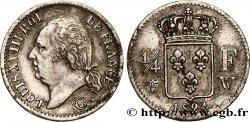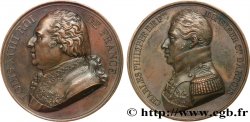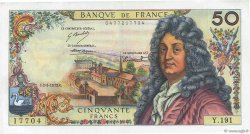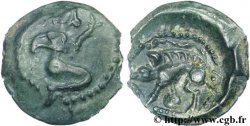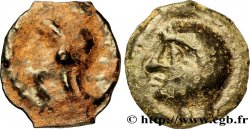Назад 1/1
E-auction 104-55047 - fjt_281214 - LOUIS XVIII Quinaire de Louis XVIII 1822
Чтобы принять участие в торгах, вы должны войти в систему и стать подтвержденным участником аукциона. Войдите, чтобы сделать ставку. Ваш аккаунт будет подтвержден в течение 48 часов. Не ждите до закрытия торгов, чтобы зарегистрироваться.Сделав ставку на данный товар, вы вступаете в юридическое соглашение на покупку выбранного товара и нажатием кнопки «Сделать ставку» подтверждаете принятие вами условий интернет-аукционов cgb.fr.
Ставка может бить сделана только в полном эквиваленте евро. Торги закроются согласно времени, указанному в описании товара, все ставки, сделанные после закрытия торгов, учитываться не будут. Не следует откладывать предложение вашей ставки до последнего момента, так как система может не успеть обработать вашу заявку, и ваша ставка не будет принята. Более детальную информацию вы найдёте здесь: FAQ по интернет-аукционам.
БЕСПЛАТНО.
БЕСПЛАТНО.
| Оценить : | 120 € |
| Цена : | 57 € |
| Максимальная предлагаемая цена : | 67 € |
| Конец торгов : | 13 April 2015 18:24:30 |
| Участников : | 9 Участников |
Тип Quinaire de Louis XVIII
Дата: 1822
Металл: silver
Диаметр: 13 mm
Ориентация осей монеты: 12 h.
Вес: 1,07 g.
Век: lisse
Редкость: R3
Лицевая сторона
Аверс: легенда: LOUIS XVIII A SON AIEUL LOUIS LE GRAND.
Аверс: описание: Buste de Louis XVIII à gauche en uniforme.
Обратная сторона
Реверс: легенда: RETABT DE LA STATUE DE LOUIS XIV LE XXV AOUT MDCCCXXII.
Реверс: Описание: Tête de Louis XIV à gauche.
Комментарий
Cette médaillette fut frappée le 25 août 1822, à l'occasion du rétablissement de la statue de Louis XIV, place des Victoires , statue qui avait été déboulonnée pendant la Révolution.
Le choix de la date du 25 août n'est pas anodin, c'est la Saint-Louis, depuis 1297. Ces petits jetons, qui furent probablement jetés à la foule lors de l’évènement, reprennent la tradition des romains. Les empereurs romains frappaient des monnaies spécifiques, les quinaires, du diamètre et de l'aspect de notre jeton, qui servaient lors des largesses impériales, jetées au peuple.
Ce qui est plus que curieux est qu’il existe un autre quinaire, bien plus commun, voir fjt_247960 , lequel est frappé avec une technologie moderne pour l’époque alors que celui-ci ressemble plus à ce qui aurait pu être frappé sous Louis XIV.
This medallion was struck on August 25, 1822, on the occasion of the restoration of the statue of Louis XIV, Place des Victoires, a statue that had been unbolted during the Revolution. The choice of the date of August 25 is not insignificant, it is Saint-Louis, since 1297. These small tokens, which were probably thrown to the crowd during the event, take up the tradition of the Romans. The Roman emperors struck specific coins, the quinaries, of the diameter and appearance of our token, which were used during the imperial largesse, thrown to the people. What is more than curious is that there is another quinary, much more common, see fjt_247960, which is struck with modern technology for the time while this one looks more like what could have been struck under Louis XIV
Le choix de la date du 25 août n'est pas anodin, c'est la Saint-Louis, depuis 1297. Ces petits jetons, qui furent probablement jetés à la foule lors de l’évènement, reprennent la tradition des romains. Les empereurs romains frappaient des monnaies spécifiques, les quinaires, du diamètre et de l'aspect de notre jeton, qui servaient lors des largesses impériales, jetées au peuple.
Ce qui est plus que curieux est qu’il existe un autre quinaire, bien plus commun, voir fjt_247960 , lequel est frappé avec une technologie moderne pour l’époque alors que celui-ci ressemble plus à ce qui aurait pu être frappé sous Louis XIV.
This medallion was struck on August 25, 1822, on the occasion of the restoration of the statue of Louis XIV, Place des Victoires, a statue that had been unbolted during the Revolution. The choice of the date of August 25 is not insignificant, it is Saint-Louis, since 1297. These small tokens, which were probably thrown to the crowd during the event, take up the tradition of the Romans. The Roman emperors struck specific coins, the quinaries, of the diameter and appearance of our token, which were used during the imperial largesse, thrown to the people. What is more than curious is that there is another quinary, much more common, see fjt_247960, which is struck with modern technology for the time while this one looks more like what could have been struck under Louis XIV







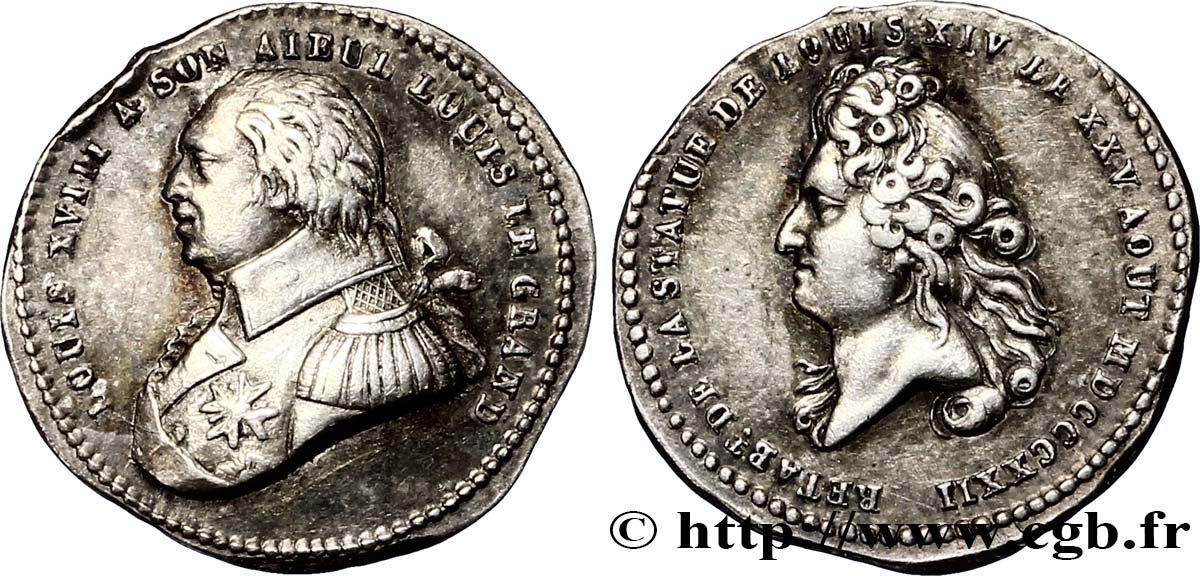
 Cообщить об ошибке
Cообщить об ошибке Распечатать страницу
Распечатать страницу Отправить мой выбор
Отправить мой выбор Задать вопрос
Задать вопрос Consign / sell
Consign / sell
 Информация
Информация


